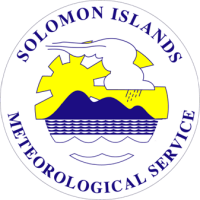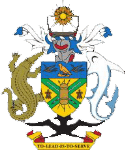 Background
Background
The Solomon Islands Meteorological Service was a section under the Ministry of Post and Telecommunications (P&T) before the Solomon Islands gained its independence in 1978. Maintenance of equipment was the responsibility of the P&T as the then, Bureau of Meteorology Australia, started reducing its expatriate staff support program. This happened as the section was upgraded to a Meteorology Division in 1984 during a change in government under the portfolio of the Ministry of Posts and Communications.
In 1985, a Meteorology Act was passed in the National Parliament and Solomon Islands Meteorological Services (SIMS) became a member of World Meteorological Organization on 06th May 1985. The Act makes provisions for the effective and proper administration of Meteorological Services to support economic development and the national interest of Solomon Islands to deal with other Meteorological related matters.
Currently, Solomon Islands Meteorological Services Division operates seven manned Met Stations, Six Automatic Weather Stations (AWS) and seven Automatic Rainfall Gauges (ARG) stations. The main operating office is located at GESO Building, Vavaya Ridge in Honiara.
Vision
Ensure safety of lives and protection of properties in Solomon Islands through effective management ofMeteorological Service.
Mission
To modernise, strengthen and enhance the institutional and administrative capacity of Meteorological service division to provide a competency services to the people and the government of Solomon Islands for sustainable development and resilience communities.
Key Issues
Solomon Islands a country separated by oceans faced with great challenge in its Meteorological observations and monitoring network to provide timely information to its people and developments. Such effective services require observations of various types and of adequate quality and quantity at the right place and right time. Both surface-base and space observations are required of physical and climate variable of atmosphere, land and oceans, including hydrological, carbon cycles and the cryosphere. Delivering such useful meteorological information also requires the availability of socio-economic, biological, and environmental data which must be effectively integrated to develop and provide useful information to the public domain, farmers, health sector, disaster risk reduction and to other weather and climate sensitive sectors.
As a result of these efforts, the government of Solomon Islands requested United Nation Development Program (UNDP), a multilateral implementing agency to support the development and administration of a project to address climate change priorities called “Enhancing resilience of communities in Solomon Islands to the adverse effects of climate change in agriculture and food security”. The approach was adopted to strengthen the ability of communities in Solomon Islands to make informed decisions and manage the likely impacts of climate change on food security.
In consultation with UNDP, National Institute of Water and Atmospheric Research (NIWA) of New Zealand was contracted to undertake a project for the procurement and installation of Automatic Weather Stations (AWS) for Solomon Islands. Supply of four (4) AWSs and twelve (12) Automatic Rainfall Station (ARS) was procured and installation of 4 AWSs and 7 ARSs was completed with telemetry systems to enable near real time data ingestion to the Climate Database System (CliDE), which was supplied by the Australian government.
The initiative was taken by the SIMS to ensure that monitoring of weather and climate is sufficient in providing timely and accurate meteorological information to address economic developments and communities’ resilience to extreme impacts from weather, climate events and climate change.
Core functions and responsibilities
In providing the meteorological information, the SIMS operates under the Meteorological Act 1985 and is specified as an essential service under the Essential Services Act. The core functions of SIMS is to provide the government, private sector and the general populace of Solomon Islands with relevant meteorological information pertaining to all aspects towards national developments, daily activities and security. These responsibilities are pursued through the function structure of SIMS under these components of services:
- Policy and administration
- Observations and monitoring
- Technical and Instrumentation
- Forecasting
- Ocean and Climate Services
- Training
Through these functions and responsibilities SIMS Division is obligated to ensure that such services are provided in a timely manner and with a high level of competency.
Programmatic Approach and Project Design
Programs for implementing the national government policy are identified under the following strategies:
- To improve SIMS capability in marine meteorological services, forecasting and warnings, and capacity to forecast severe weather events including tropical cyclones.
- Enhance capacity to effectively utilize numerical weather prediction and tsunami model for predictions.
- Establish and implement complete operation of a Quality Management System for aviation weather services to improve services to domestic and international flights and achieve certification requirements of the Civil Aviation Authority of Solomon Islands, World Meteorological Organization and International Civil Aviation Organization.
Five key result areas were identified to achieve these programs:
- to deliver weather forecast and information for aviation, marine and the general public on timely manner;
- upgrade and expand meteorological and ocean observation network;
- develop and implement a national framework for climate and ocean services;
- Review and improve end-to-end multi-hazard early warning systems;
- Conduct or participate in national, regional and international research activities on weather and climate.
The SIMS Division work programs are comprised of activities derived from these programs in their respective scopes and outcomes.
Projects
Complementing the efforts of the services provided by the SIMS Division are the following projects:
- Climate and Oceans Support Program in the Pacific (COSPPac project) – The Australian government is supporting Pacific Island countries to adapt to and mitigate the impacts of climate variability through this project. The aim of the project is to enhance the capacity of Pacific Islands to manage and mitigate the impacts of the climate variability and tidal events. The following activities were conducted under the project in Solomon Islands.
- Products and Services – climate and ocean services products are provided including Ocean portal, Seasonal climate Outlook software (SCOPIC), conducts monthly online climate outlook forum, tidal information, sea level data, Malaria early warning system, drought monitoring and response system and climate bulletins.
- Traditional Knowledge – Solomon Islands have vast and long history of coping with extreme events and climate variability by interpreting signs in their natural environment. Combining this traditional knowledge with conventional scientific forecasts we may produce valuable forecast products for improved decision making, risk management and disaster preventions in the communities.
- FINPAC project – is a regional project funded by the government of Finland and coordinated by the Secretariat of the Pacific Regional Environment Program (SPREP) in collaboration with the National Meteorological Services in the Pacific and partners on “Reduced vulnerability of the Pacific Islands countries villager”.
- Component one of the project – “Improved new weather and climate forecasts by National Meteorological Services” was implemented by a short term team of experts from the Finnish Meteorological Institute by installing a forecasting tool called SmartMet and conducted in house technical training to SIMS forecasting staff on how to operate and fully utilize its potentials.
- Component two aims at achieving “Improved ability of the National Meteorological Services to respond to the needs of villagers with regards to hazardous weather and climate change.” As such, SPREP work on a community based interventions with multiple partners such as International Federation of Red Cross (IFRC), Solomon Islands Red Cross, National disaster Management office and National Meteorological Services. Lord Howe Settlement community in Solomon Islands was identified as a pilot site for the project to develop a community disaster response plan using weather forecast and fire hazard information. The program is still going.

